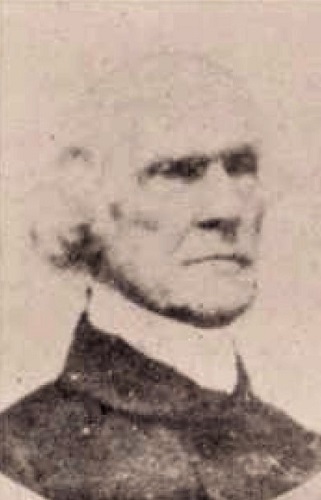
Horatio Bolton (source: see C.N. 134 below)
Edward Winter
(1982, with updates)

Horatio Bolton (2 June 1793-15 August 1873) was an indefatigable problemist whose compositions made few allowances for possible inadequacies of potential solvers. When he died, Staunton’s Illustrated London News column (20 September, 1873, page 279) described Bolton as ‘one of the finest composers of chess problems this country has produced’. Interestingly, it was added that ‘he was a godson and a connection of the great Lord Nelson’:


(44)
In C.N. 1636 Bob Meadley (Narromine, NSW, Australia) asked for further details about the ties between Bolton and Nelson. The answer can be found now on a detailed biographical page about Bolton by Stephen John Mann.
Page 46 of the Dictionnaire des échecs by François Le Lionnais and Ernst Maget (Paris, 1967) has an entry for Horatio Bolton:
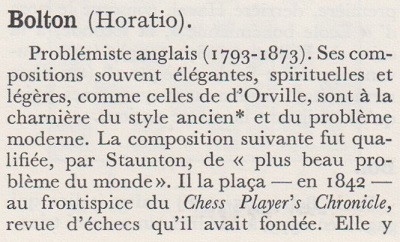
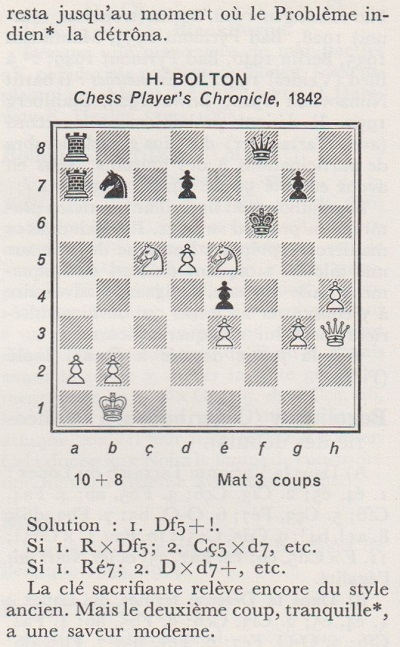
(63)
The position was widely published in the nineteenth century with the story that it was Staunton’s choice when he was ‘once’ asked to name his favourite three-mover. See, for instance, the discussion in the Chess Player’s Chronicle in 1882: 4 January, page 9 (with, erroneously, a black bishop on d7); 18 January, page 35; 17 May, page 238. The last of these was a letter from J.A. Miles:
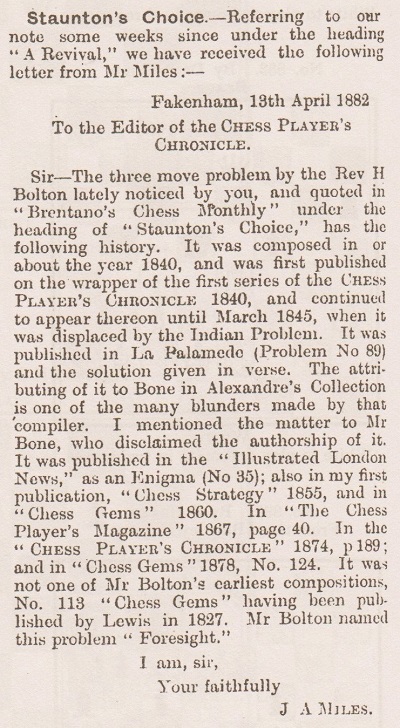
The misattribution to Bone instead of Bolton is curious, and is perpetuated in one on-line problem database that we consulted.
As regards the problem’s first appearance, Michael McDowell (Westcliff-on-sea, England) has informed us that the WinChloe database gives as the source ‘VII, New Court Gazette, 27 June 1840’ and lists over 30 reproductions. We have so far been unable to find that edition of the New Court Gazette. It is also difficult to show the problem’s first appearance in the Chess Player’s Chronicle, given the scarcity today of copies which include wrappers. What precisely Staunton stated in print about the problem on one or more occasions remains unclear.
C.N. 63 included too a contribution from Colin Vaughan, the then Editor of the Problemist:
‘Mention of Bolton in C.N. 44 sent me groping for my library books, and I discovered from page 28 of S.S. Blackburne’s Terms and Themes of Chess Problems (London, 1907) that the Rev. H. Bolton was a Norfolk clergyman and:
‘a fine composer of the old school. He used to be regarded as the Father of the Problem Art in England and was a master composer of his day.’
S.S.B. quoted only one example of his style, and this he had cribbed from B.G. Laws’ The Two-Move Chess Problem (London, 1890), in which there is also a second example:’
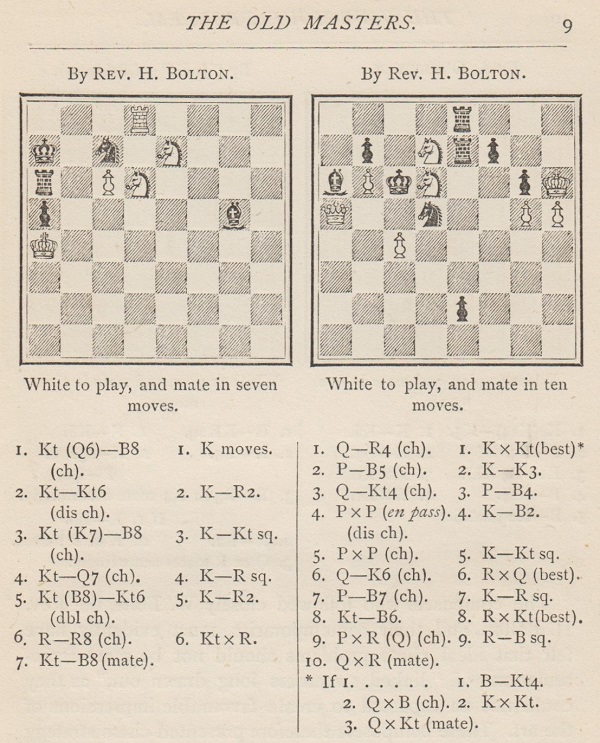
R.F. Bradley (Donaghadee, Northern Ireland) adds that in Weenink’s Chess Problems (from A.C. White’s Christmas Series, 1926) a photograph is shown of the Rev. Horatio Bolton. For another example of his composing skills, Mr Bradley refers us to page 209 of the Chess Player’s Chronicle, 31 July 1841:

Mate in seven
(134)
The solution is given at the end of the present article. The photograph in Weenink’s book, the small portrait shown in C.N. 3467, is reproduced at the top of the present article courtesy of Mr McDowell.
Mark McCullagh (Belfast, Northern Ireland) points out a proposal by Horatio Bolton in a letter published on page 318 of the Chess Player’s Chronicle, 1852:
‘A new specimen of odds which, so far as I know, originates with myself, has been lately patronized here, and I wish for your judgment as to the relative strength of the parties.
The first player alone agrees not to check his adversary until he can effect checkmate; in every other respect the game is played as usual on both sides. These odds, I believe, are equal to giving a queen, and they occasion very striking positions.’
(5629)
The entry on Bolton in the unpublished 1994 edition of Chess Personalia by Jeremy Gaige:
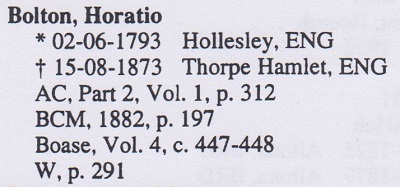
The BCM page (June 1882 issue) listed by Gaige was the monthly ‘Almanac’ feature, mentioning only that Bolton was born on 2 June 1793.
A discussion of Bolton’s status as a problemist, together with biographical information, was presented by H.J.C. Andrews in the Huddersfield College Magazine, February 1878, pages 191-194, June 1878, pages 241-244, and September 1878, pages 329-330. The final part noted that many specimens of Bolton’s work had just been published in the new edition (London, 1878) of Chess Gems by J.A. Miles.
Solution to the seven-mover in C.N. 134: 1 Rc7 2 Rc6 3 Nf7 4 Ne5 5 Nd3 6 Nb4+ 7 c3 mate. Black’s moves are forced. 1 Nf7 also mates in seven.
Guy Meissonnier (Maisons-Alfort, France) draws attention to the article ‘Un célèbre problème d’Horatio Bolton’ by François Fargette on page 2238 of Thèmes-64 issue 113 (January-March 1984).
(11954)
Addition on 4 July 2023:
Guy Meissonnier also draws our attention to an article in The Chess Journal/Browson’s Chess Journal, May 1877. The scans below have been provided by the Cleveland Public Library:





We reproduce below the article’s earlier appearance on page 5 of the Norwich Mercury, 3 March 1877:


Addition on 28 July 2023:
Michael McDowell has sent us the section on Horatio Bolton (pages 7-13) in Das indische Problem by Johannes Kohtz and Carl Kockelkorn (Potsdam, 1903).
To the Archives for other feature articles.
Copyright: Edward Winter. All rights reserved.